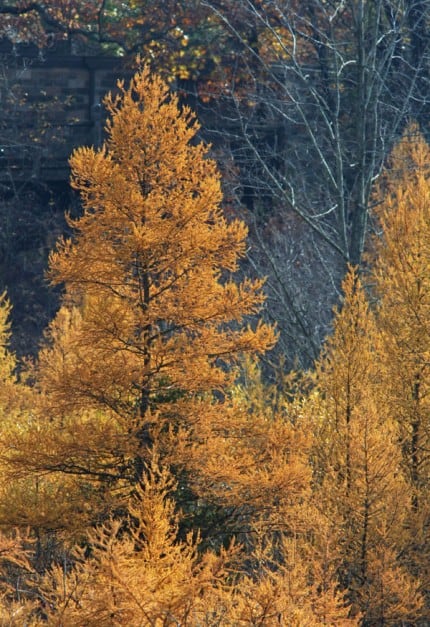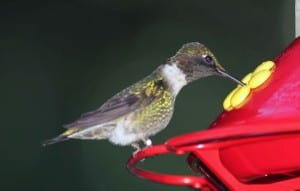
By Jennifer Fairfield, owner the Garden Mill
(Publisher’s note: Part 1 published Friday, part 2 yesterday.)
September is also a great time to plant new perennials, trees and shrubs. Many garden centers have sales at this time of year, so take advantage of them, but get them in early so that the plants have time to get their roots established before cold weather sets in. Whatever you plant, be sure to water it thoroughly from the time you plant up until the ground freezes. Until they really get established, the roots are not very good at taking water up from the soil, so you really need to keep them watered.
You may be noticing that many trees are already starting to turn color. It’s not because it’s getting colder, but because of the stress they suffered from the lack of rain all summer. To relieve some of that stress going into winter, be sure to keep trees and shrubs watered until the ground is frozen. This will help them get through whatever winter has in store for us.
If you put house plants outside for the summer, treat them with a pesticide meant for indoor plants before bringing them back inside.
Lawn:
While it was so hot and dry, our lawns naturally went dormant, looking a bit brown, and not growing much. Now that most of us have seen some rain, our lawns are springing back to life.
If your lawn has mostly greened up again, but you are seeing some areas of brown, it is possible that you have a pest problem. MSU Extension has tips on determining what the problem is and what to do about it.
As the weather cools off, it’s a great time to fill in bare spots in the lawn. To overseed your lawn’s bare patches, start by raking away any dead grass and roots, and then sprinkle some seed in. You can also add a little bit of top soil to give the seed a better chance to take hold.
Don’t forget to cover the area lightly with a little mulch to keep moisture in (straw works well). Keep the area well watered. Once the grass starts to emerge, remove the mulch so as not to smother the grass.

De-thatch your lawn, if necessary. This is something that most people don’t do, and probably should, if they want a really good-looking lawn. According to MSU extension, “Thatch is the accumulation of dead and decomposing turf stems, leaves and roots intermixed with live plant roots.” It’s not due to leaving clippings on the lawn, which is good for it.
MSU has a good resource on how to de-thatch your lawn.
Now is a good time to fertilize your lawn to encourage good root growth before winter.
Continue to mow, but don’t cut it too low. Your grass needs a little bit of height to help insulate it during the winter, but you don’t want to stop mowing and leave it too long either. This will promote something called snow mold disease, which will leave ugly bare patches in your lawn next spring.
The University of Minnesota Extension offers some easy-to-follow tips for lawn mowing here.
Leaves left lying on the lawn can also promote snow mold disease, so don’t just leave them lying on your lawn – at least not whole. Mulching them into the lawn is a great way to help promote a healthier lawn.
For tips on how to mulch your leaves (including a video), check out the MSU Extension website. If you feel like you just have way too many leaves to mulch them all in, then rake up some of the chopped-up leaves and use them as mulch on your flower beds, trees, and shrubs. Don’t use leaves left whole for this though – they tend to mat down and can prevent water from reaching the roots of your plants.

Birds:
Clean out bird houses to get rid of pests and debris. Some birds will use houses left out in the winter for shelter during cold nights, so consider leaving them out all winter. Just be prepared to clean them out again in the late winter, before the nesting birds come looking for a new home in the spring.
If you haven’t been feeding the birds all summer, now is the time to start up again. Lots of birds are on the move – migrating through on their way to their winter hang-outs – and can use as much additional food as you care to give them for their journey.
They spend a lot of energy looking for things to eat in the wild, and that extra energy can be the difference in whether they make it all the way to their winter home or not.
For the same reason, keep your birdbaths out, cleaned, and filled all the way up until we get heavy frosts (or beyond, if your birdbath is freeze tolerant).
Also leave your hummingbird feeders out until well into October to help those guys make their long journey.
Bring your hummer feeders in if the temperature is predicted to fall below freezing overnight.













